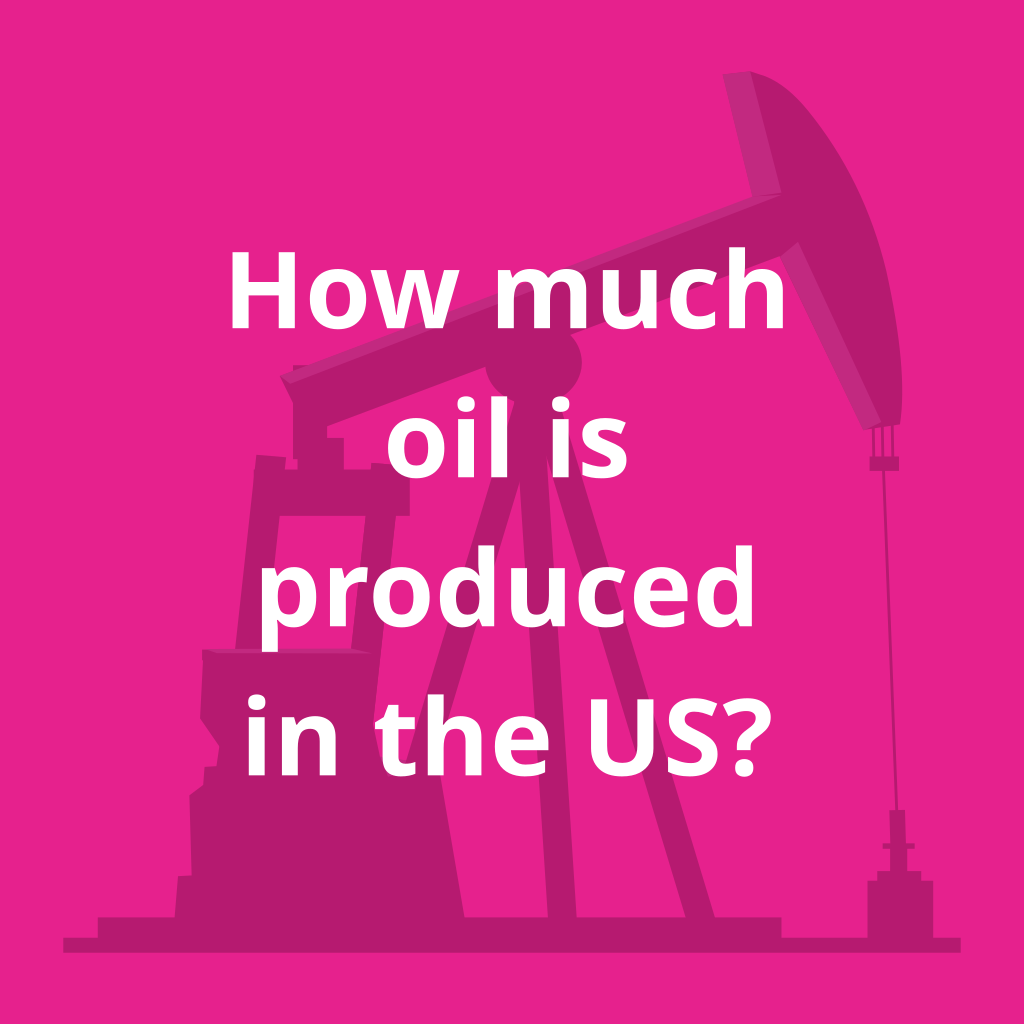We are not affiliated, associated, authorized, endorsed by, or in any way officially connected with the USA FACTS, or any of its subsidiaries or its affiliates. The official USA FACTS website can be found at http://www.usafacts.org.
How much oil is produced in the US?
Since 2018, the US has been the largest producer of crude oil in the world.
Updated on Mon, August 21, 2023 by the USAFacts Team
Oil production plays a key role in the nation’s economic and energy landscape. Everything from gas prices to clothing is impacted by the cost of extracting petroleum and all its byproducts.
While the Biden administration is driving efforts to implement a large-scale transition to renewable energy and investment in green technology, much of the US economy is still inextricably tied to oil production and will continue to be for the foreseeable future.
So, what is the state of oil production in the US today? Is the country producing enough to meet consumption demands, and how has the industry changed over the past decade?
Is US oil production down?
Domestic energy production has increased faster than at any other time in history, with crude oil production more than doubling between 2011 and 2022. US crude oil peaked in 2019 with the country producing an average of 12.3 million barrels per day.
According to the Energy Information Administration, the US has been the largest producer of crude oil in the world since 2018, surpassing Russia and Saudi Arabia.
The Energy Information Administration (EIA) expects US crude oil production to increase to record heights in 2023 and 2024.
Which states produce the most oil?
In 2022, over 70% of total crude oil production came from five states.[1] In descending order, these were:
- Texas: More than 1.8 billion barrels of crude oil produced, or 42.4% of total US production
- New Mexico: More than 574 million barrels of crude oil produced, or 13.2%
- North Dakota: More than 386 million barrels of crude oil produced, or 8.9%
- Alaska: More than 159 million barrels of crude oil produced, or 3.7%
- Colorado: More than 157 million barrels of crude oil produced, or 3.6%
In addition, 14.7% of total crude oil produced in 2022 came from the Gulf of Mexico offshore territory.
Crude oil production rates have varied over the past 40 years across different states. In some states, such as Alaska, production rates have steadily fallen as oil wells have dried up and exploration for new sites has subsequently declined.
How much US oil is produced by fracking?
Since 2015, oil extracted through fracking has accounted for more than half of total US crude oil production.
In 2022, two-thirds of all US oil came from fracking, compared to under 7% two decades ago.
While hydraulic fracturing has helped extract fossil fuels for over six decades, its significant contribution to crude oil production is a more recent development. This technique, combined with horizontal drilling, has led to an unprecedented surge in oil production over the past several years.
Fracking involves injecting a high-pressure liquid, mostly water, into a well to fracture rock formations containing hydrocarbons. This process facilitates the extraction of materials such as crude oil and natural gas, allowing them to be refined once returned to the surface.
These figures take in production in offshore territories as well.



